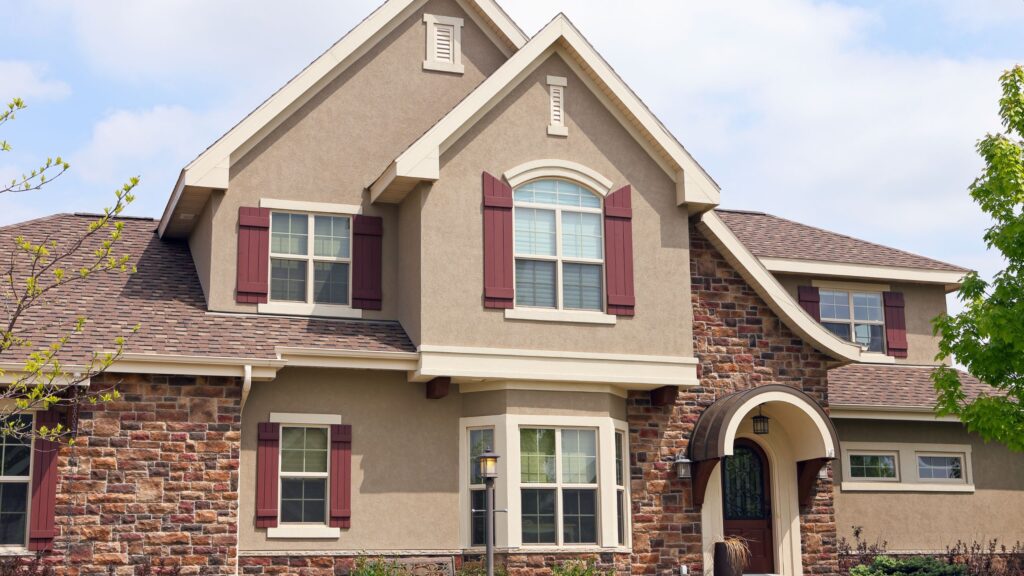Stucco siding must be manufactured to withstand potential warping, buckling, splitting and staining due to its porosity, especially in humid climates. Rigid stucco panels are also susceptible to thermal movement that may cause stucco seams to open or separate under the influence of temperature differentials between inner and outer surfaces. Manufacturers overcome this problem by using tie wires spaced every inch or so in stucco joints. The stucco must also have adequate compressive strength so it does not fall off the rigid panels.

Thinner stucco skins may enhance the appearance of stuccos because it can be applied quickly without the use of stucco mesh and stucco base coats. On the other hand, stuccos that are too thin can easily crack or fall off of panels, whereas stuccos that are too thick may remain un-bonded to the rigid panels.
Once stucco siding is applied, it must be kept dry until it has cured fully for at least three days. This is usually done by covering stucco paneling with a hydrophobic sheeting material such as plastic sheeting and masking tape. During the curing process stucco skins will typically shrink away from stucco joints and generate significant off-gassing due to water evaporation. Stuccos may also be sealed with stucco sealers, stucco paints or stucco primers.
Ready to upgrade your home’s exterior with quality and durability? Contact Premiere Exterior Services and discover how we can protect and enhance your property with modern siding and finishing solutions!


